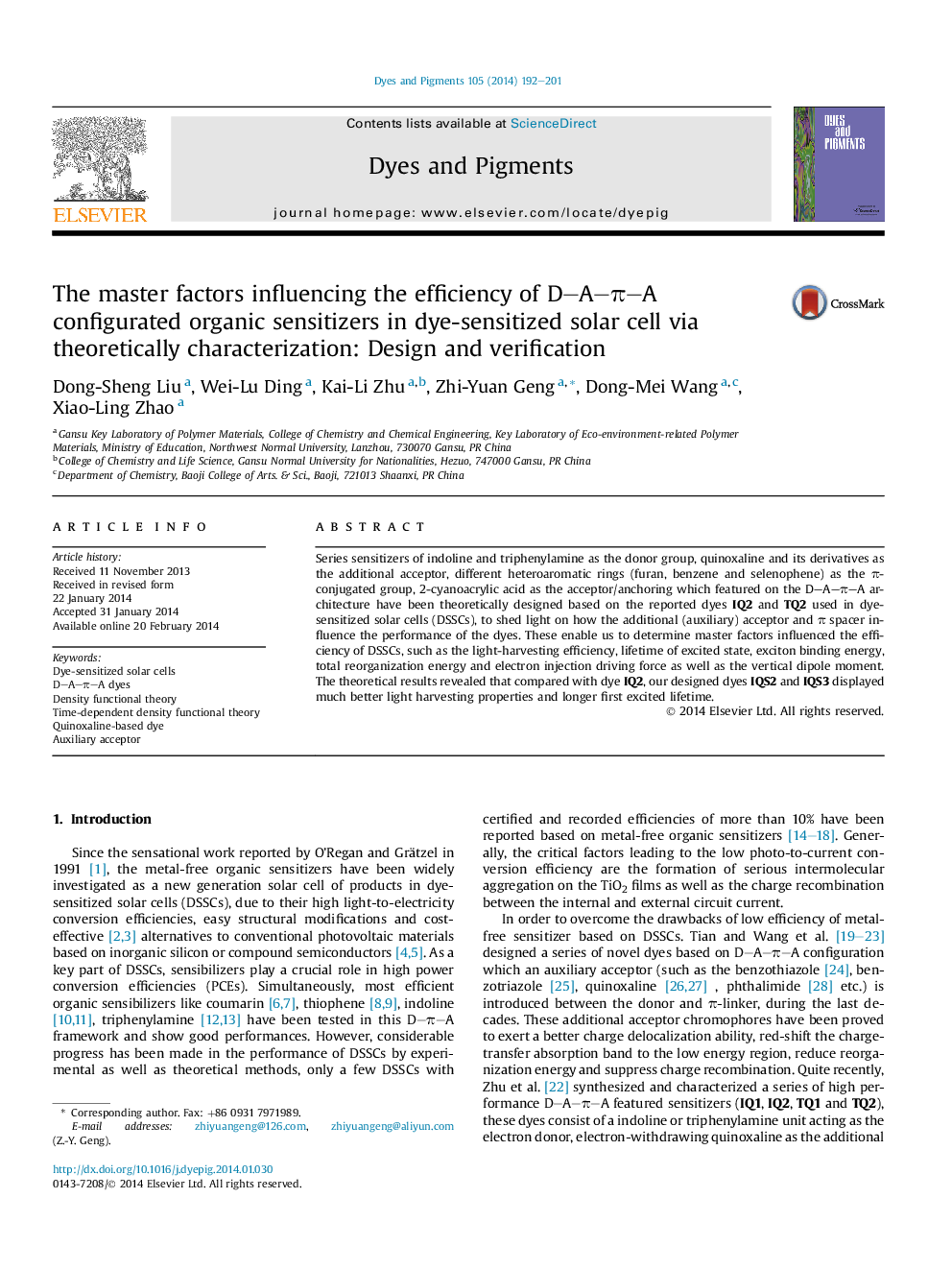| Article ID | Journal | Published Year | Pages | File Type |
|---|---|---|---|---|
| 176256 | Dyes and Pigments | 2014 | 10 Pages |
•Novel quinoxaline and its derivatives dyes were designed with different electron donors.•The theoretical examination was performed on the key parameters.•Quinoxaline derivative as the additional acceptor is superior to quinoxaline as the additional acceptor.•Dyes IQS2 and IQS3 displayed much better LHE (0.960) and longer first excited lifetime.
Series sensitizers of indoline and triphenylamine as the donor group, quinoxaline and its derivatives as the additional acceptor, different heteroaromatic rings (furan, benzene and selenophene) as the π-conjugated group, 2-cyanoacrylic acid as the acceptor/anchoring which featured on the D–A–π–A architecture have been theoretically designed based on the reported dyes IQ2 and TQ2 used in dye-sensitized solar cells (DSSCs), to shed light on how the additional (auxiliary) acceptor and π spacer influence the performance of the dyes. These enable us to determine master factors influenced the efficiency of DSSCs, such as the light-harvesting efficiency, lifetime of excited state, exciton binding energy, total reorganization energy and electron injection driving force as well as the vertical dipole moment. The theoretical results revealed that compared with dye IQ2, our designed dyes IQS2 and IQS3 displayed much better light harvesting properties and longer first excited lifetime.
Graphical abstractFigure optionsDownload full-size imageDownload as PowerPoint slide
